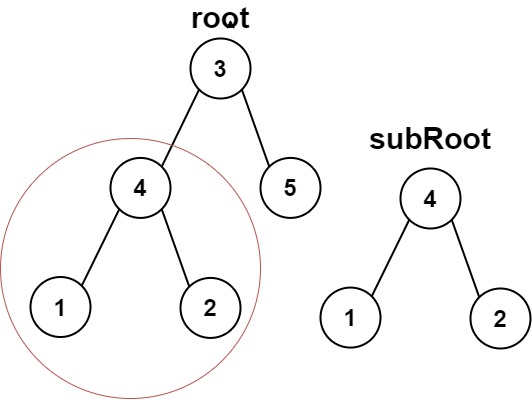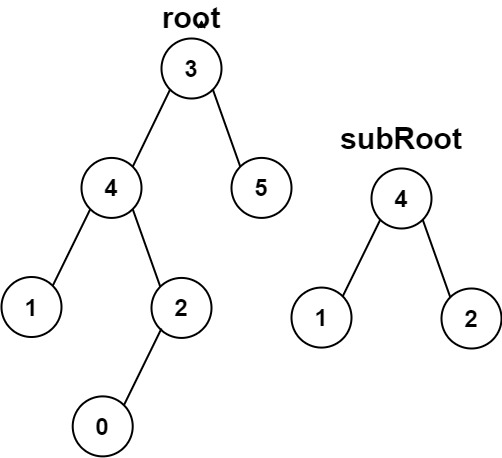Given the roots of two binary trees root and subRoot, return true if there is a subtree of root with the same structure and node values of subRoot and false otherwise.
A subtree of a binary tree tree is a tree that consists of a node in tree and all of this node's descendants. The tree tree could also be considered as a subtree of itself.
Example 1:

Input: root = [3,4,5,1,2], subRoot = [4,1,2] Output: true
Example 2:

Input: root = [3,4,5,1,2,null,null,null,null,0], subRoot = [4,1,2] Output: false
Constraints:
- The number of nodes in the
roottree is in the range[1, 2000]. - The number of nodes in the
subRoottree is in the range[1, 1000]. -104 <= root.val <= 104-104 <= subRoot.val <= 104
A:
/*** Definition for a binary tree node.* struct TreeNode {* int val;* TreeNode *left;* TreeNode *right;* TreeNode() : val(0), left(nullptr), right(nullptr) {}* TreeNode(int x) : val(x), left(nullptr), right(nullptr) {}* TreeNode(int x, TreeNode *left, TreeNode *right) : val(x), left(left), right(right) {}* };*/class Solution {public:bool isSubtree(TreeNode* root, TreeNode* subRoot) {if(!root){return subRoot == nullptr;}return isMatch(root, subRoot) ||isSubtree(root->left, subRoot) ||isSubtree(root->right, subRoot);}private:bool isMatch(TreeNode* root, TreeNode* subRoot){if(!root && !subRoot){return true;}else if(!root || ! subRoot){return false;}else{return (root->val == subRoot->val) &&isMatch(root->left, subRoot->left) &&isMatch(root->right, subRoot->right);}}};
No comments:
Post a Comment